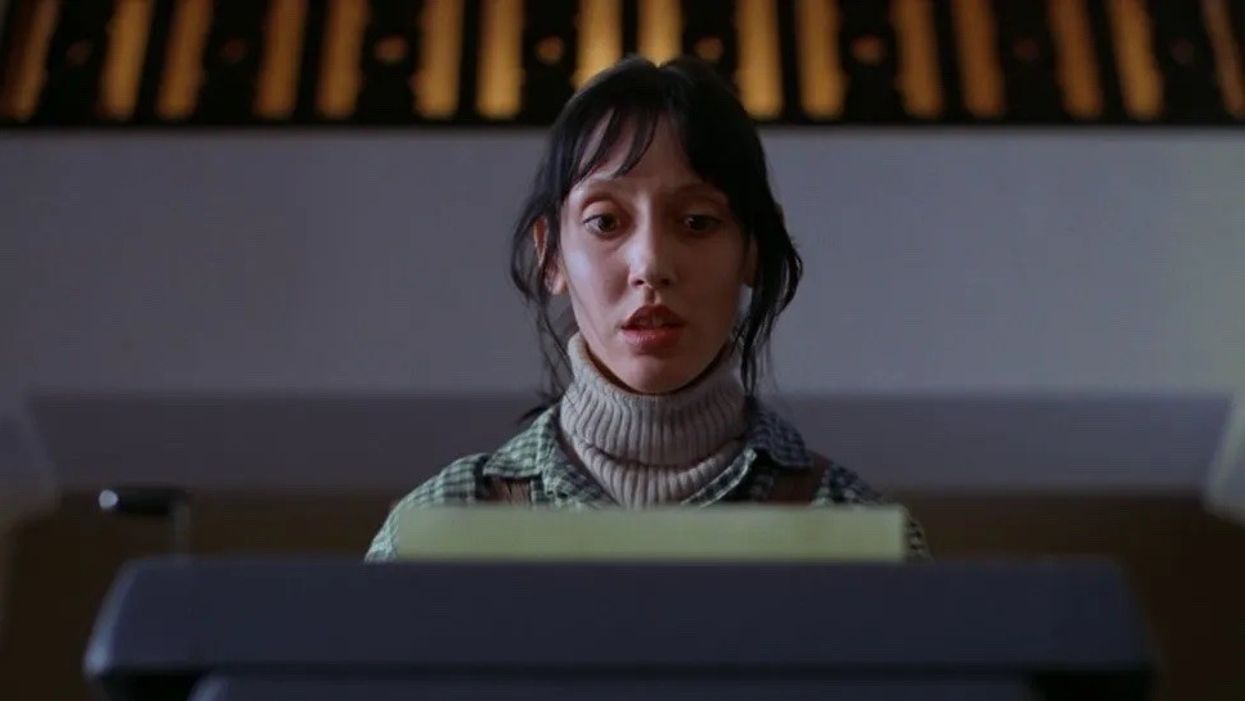Were the Events in 'The Shining' All in Wendy’s Head?
All of the camera placements and continuity errors point to this theory being true.

It is no secret that Stanley Kubrick was an obsessive artist who demanded perfection from his work. He was in control over most aspects of the filmmaking process, from directing to writing to editing, and took painstaking care of the details of the staging scenes. Even continuity errors were purposeful, making the audience dig deeper to find what the truth was behind Kubrick's films and characters.
The Shining, a film filled to the brim with continuity errors, has often been picked apart to understand what Kubrick’s true intentions were. People have formulated plenty of theories about the movie, deciphering what the small details mean, but Rob Navarro might have found one that might be true.
Navarro believes that most of the events in the film are happening in Wendy's (Shelley Duvall) head.
Don’t believe it? Well, let’s break it down, then.
What is the Wendy Theory?
One of the more famous continuity errors in The Shining is the scene where Jack (Jack Nicholson), who is attempting to write a novel, is interrupted by Wendy in the Colorado Room.
Jack rips the paper out of the typewriter as Wendy walks up to him to say hello. The conversation proceeds with the camera cutting back and forth between two, but the chair and table behind Jack disappears and reappears multiple times when the camera cuts to him. In the end, Wendy walks away and Jack goes back to typing with a puzzled look on his face, looking a bit more put together.
Navarro believes that this moment shows Wendy experiencing one of her many hallucinations.
At the end of the conversation, Jack returns to typing on the paper that he supposedly took out of the typewriter at the beginning of the scene. Could it be he never took the paper out? Maybe Wendy imagined Jack taking out the paper and having an aggressive conversation, when in reality she walked up to him, stared, said nothing, then walked away. Jack’s aggressive response is only in her mind, feeding into her theory that he is dangerous to her and Danny (Danny Lloyd).
Wendy is both the sender and receiver of her messages, creating a false narrative that reflects the story that Jack was told about the Grady family by the hotel's manager. Jack tells Wendy this story because he knows she loves stories, specifically horror stories. The increasing paranoia mixed with her active mental illness recreates the Grady family's horror story with her family taking their place. Jack becomes Charles Grady (Philip Stone), or Delbert Grady (the name Wendy made up for Mr. Grady since she did not know his first name), and Wendy and Danny become Mrs. Grady and the children that were brutally murdered.

How do we know when Wendy is experiencing a hallucination?
There are multiple moments in the film that show when Wendy is having a hallucination, but they are easy to miss because of how small they seem to be. These moments include the color of Danny’s tricycle, which is white, not red, the TV playing a movie when the TV isn’t plugged in, the pattern of the carpet changing directions, and the entire lore around Room 237.
Kubrick gives the viewer a clue when Wendy is experiencing a hallucination using the camera’s placement. According to the theory, when the camera is facing the back of the characters, the perspective of the story shifts into Wendy’s perception of reality. Nothing else can exist outside of the frame because Wendy’s perspective is limited. Any moment happening outside of Wendy’s perspective is in her imagination.

There are missing light switches and furniture, and simple errors such as incorrect colors and patterns on items and carpets. If most of the film’s events are happening in Wendy’s head, then she might have not remembered the details of every room in the hotel. It's like painting a picture of a room from memory: you can recreate most of the room, but there will be a few things missing.
In moments of supposed psychosis, Wendy is creating a new scenario in her head, and Kubrick could be showing this through the stage design. The continuity errors are glitches in Wendy’s memory, and these glitches become convincing enough to Wendy that she cannot tell the difference between the truth and the imagined.
Another way Kubrick may tell us that we have entered Wendy’s perspective is when the camera faces the backs of characters. When the camera follows a character into a room or down a hallway, there are always errors in the production design.
A great example is when Danny is playing in the hallway of Room 237. The scene starts with the camera facing Danny, showing the pattern of the carpet pointing down the hallways, toward Room 237. A ball rolls into the frame, and the camera cuts to the back of Danny’s body. In that quick cut, the carpet’s pattern has flipped, with the brown design now facing the other way.

The Shining is smart in its subtle approach, making the audience work to uncover the layers Kubrick created. The film is very open-ended, which leaves room for the viewer to interpret the film in many different ways.
That being said, there are not many plot holes that you can find in this theory, which makes rewatching Wendy’s descent into madness all the more terrifying.
What do you think of the theory? Let us know in the comments below!
Source: Rob Navarro













